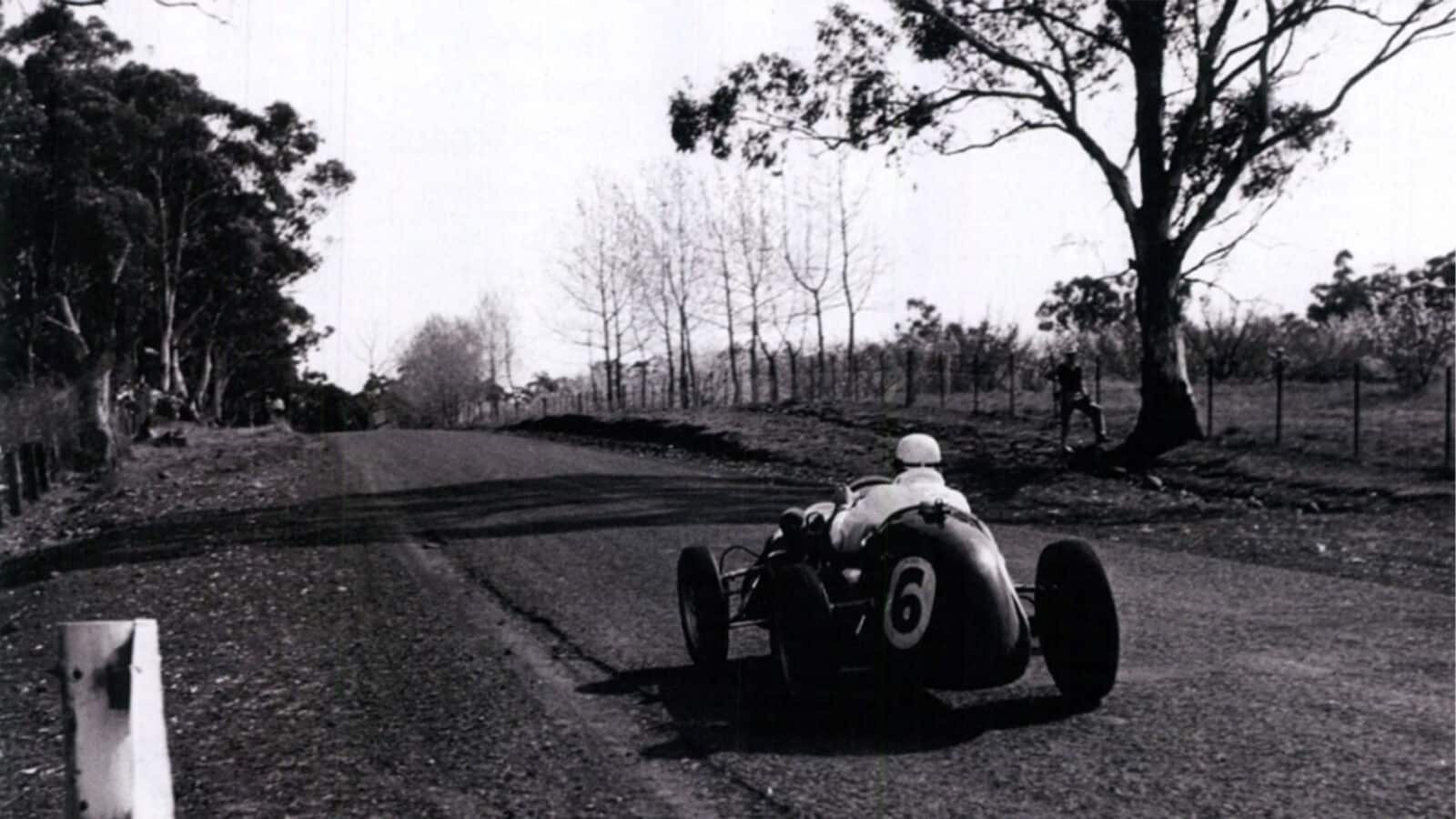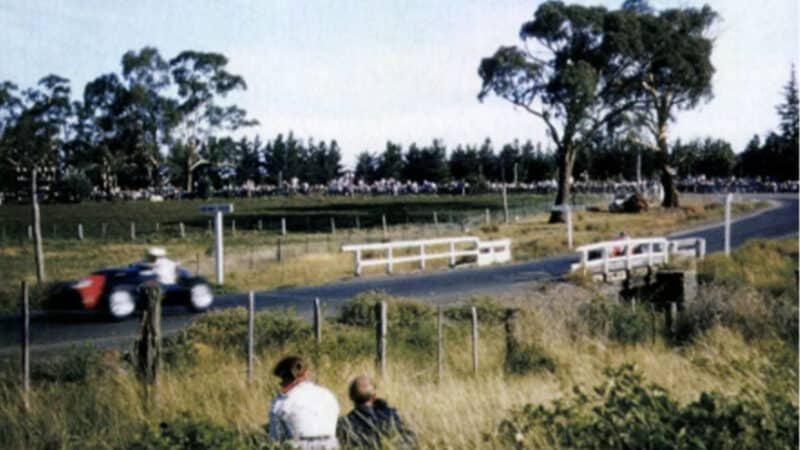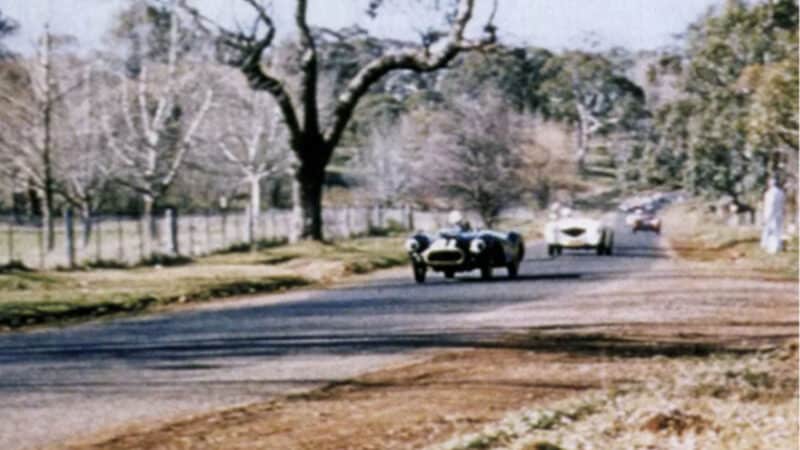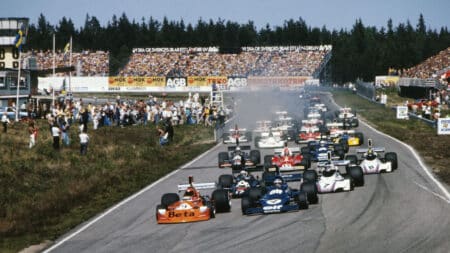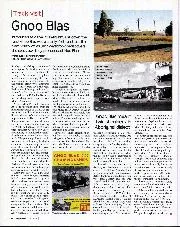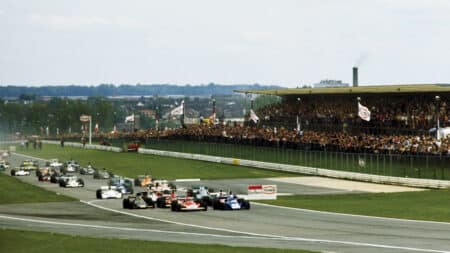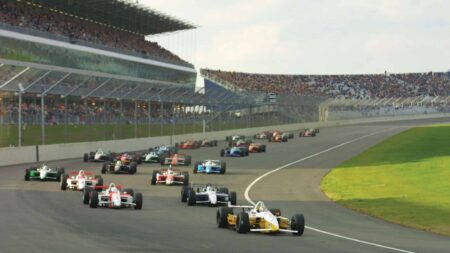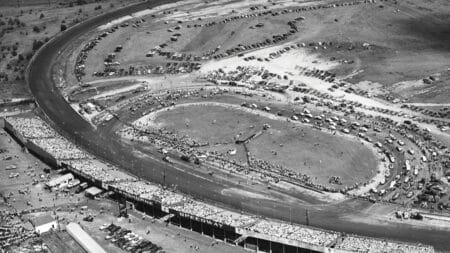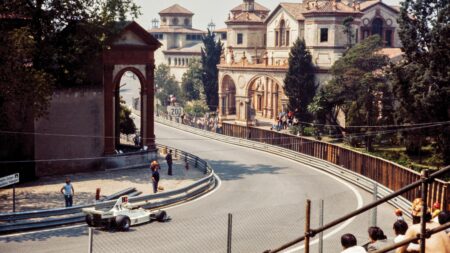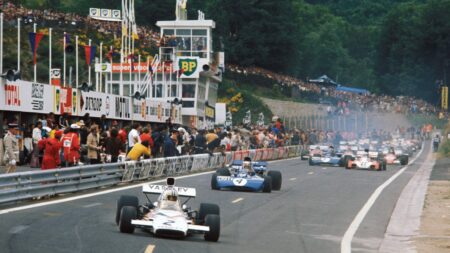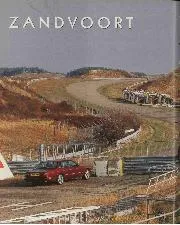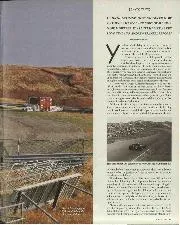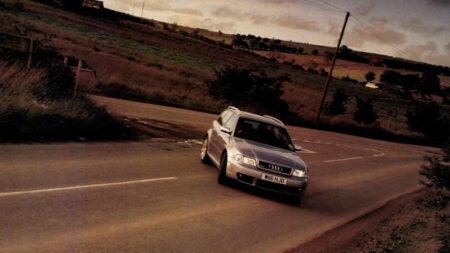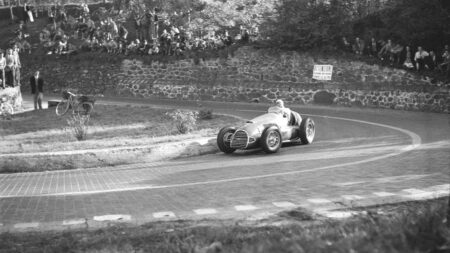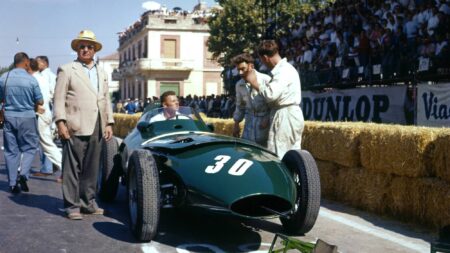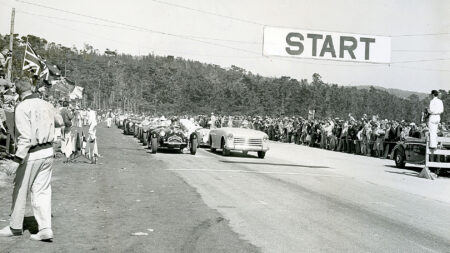The media coverage generated by Saturday’s crash resulted in a bumper crowd of 15,000 on Monday for a programme of eight handicap races. Before he threw a tread from a rear tyre, Jack Murray and his Day Special established the initial outright lap record at 2min 32sec, a shade under a 90mph average. The car was derived from a Type 39 Bugatti dating from 1926 that had been driven to victory in the ’31 Australian Grand Prix at Phillip Island by Carl Junker. Now with a 5-litre Mercury engine, Murray charged from the back of the grid, but flung the Day Special into a ditch after failing to take Mrs Mutton’s Corner. Almost simultaneously, a three-car accident left former fighter pilot Curley Brydon with a broken arm and wrist – and a written-off MG TC. Only a handful of cars completed the race, won by David McKay’s TC.
Now it was time for the real test. At the time, strict import restriction in Australia meant that tyres were in short supply, and racing tyres almost non-existent. Consequently, Gnoo Blas’s 1.3-mile main straight (originally Mental Straight but changed to the less offensive Hospital Straight) was a real punisher, tyre failures being commonplace on the more powerful cars. By Easter the situation was critical, but fortunately the cool autumn weather had arrived in the region, which is 700 metres above sea level, and rubber catastrophes were kept to a minimum.
The question of spectator loyalty was answered in the negative, however: only 7,000 turned up, with 10,000 claimed for the rival motorcycle meeting on the same day at Bathurst. Star of the day was Tom Sulman and his blown 4C Maserati, which took five wins from as many starts. Peter Vennermark, in the ex-Raymond Sommer 4CL Maserati, pushed the outright lap record to 92 mph, although the car’s brakes collapsed under the strain.
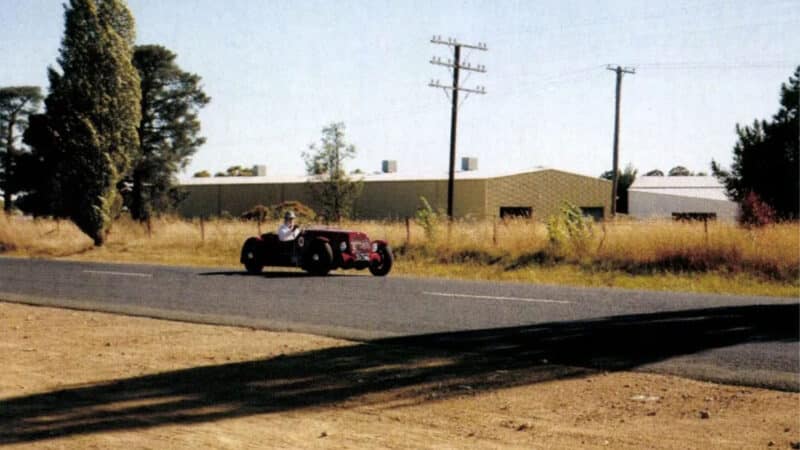
‘Reed Special’ crosses the Gnoo Blas start-finish line
Dennis Gregory; National Motor Racing Museum, Bathurst
A third meeting for 1953 took place in October, the feature 100-mile New South Wales Grand Prix being won on handicap by Jack Robinson’s Jaguar XK120, with Jack Brabham’s Cooper-Bristol collecting a separate award for the fastest race time. But within the ASCC ranks there was much trouble brewing, and a splinter group, calling itself the Australian Racing Drivers’ Club, broke away and headed back over to Bathurst, where it resumed promotion in ’54.
Now the rivalry was really on. Easter Monday 1954 saw the new ARDC staging the NSW GP at Bathurst, while the ASCC had its own show at Orange. Most of the top names, including Stan Jones and Brabham, went to Bathurst, but Gnoo Blas drew a healthy crowd to see New Zealander Fred Zambucka push his 2.9-litre supercharged Maserati to a new lap record of 2min 15sec – the magic 100mph lap.
The announcement of this ‘record’ was treated with much raising of eyebrows, and was generally reckoned to be a publicity stunt to claim the title of Australia’s fastest circuit. It would be a while before anyone remotely approached the figures quoted on that day. Down the Mental Straight the Maserati reached 142mph, fast enough to keep Arthur Wylie’s supercharged Javelin Special at bay.
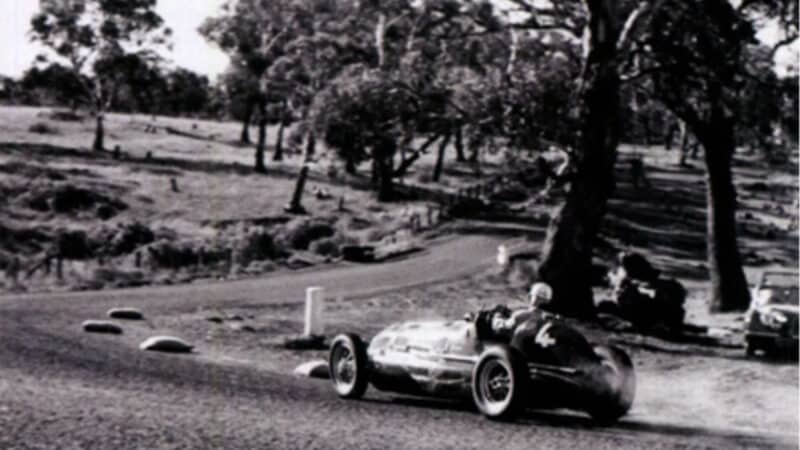
Fred Zambucka at Brandy Corner
Dennis Gregory; National Motor Racing Museum, Bathurst
By 1955 Gnoo Blas had established two dates per year, one on the Monday holiday of the Australia Day weekend in January, the other on the October Labour Day holiday weekend. The January date was touted as an international meeting, with Englishman Peter Whitehead in a four-cylinder 3-litre Ferrari, expatriate Australian Tony Gaze in a similar car, B Bira with a 2.5-litre Maserati, and New Zealanders Zambucka and John MacMillan, the latter in a supercharged 2.9-litre Alfa Monoposto. Bira’s Maserati threw a rod after just three laps of practice, while his spare OSCA suffered a scavenge pump failure, dumping its oil all around the circuit. Ian Mountain, following in his Peugeot Special, hit the oil and careered off the road, killing himself and injuring several spectators.
Whitehead took the main 27-lap South Pacific championship from Brabham’s Cooper-Bristol, recording 149mph through the flying quarter-mile on Hospital Straight. On the October date, some degree of cooperation saw Bathurst run on the Sunday, with the survivors decamping to Orange on the Monday. The feature event, the 20-lap Gnoo Blas Trophy, went to George Pearce in his Cooper-MG.
